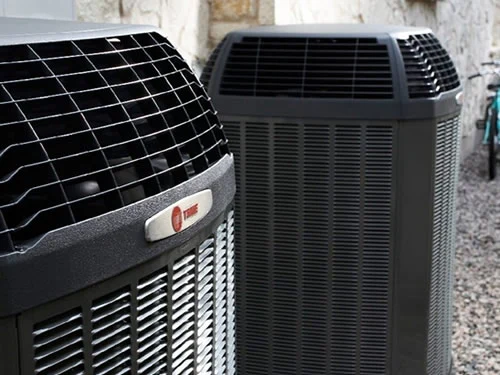
*Houston AC Repair Services - Orig Page
AC Repair Service Houston
Air Conditioning Repair in Greater Houston by the Experts at John Moore
Call the AC Experts at John Moore for AC Repair Services in the Greater Houston Metropolitan Area
Why is My Air Conditioner Not Cooling?
Condensers & Condenser Repair
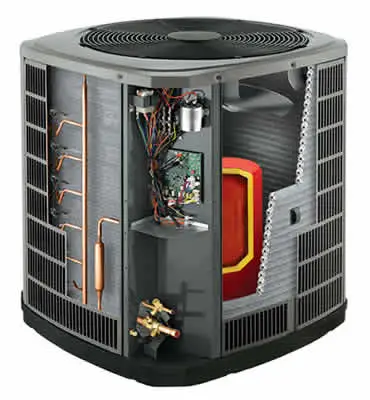
What's a Condenser?
What Should I Look For?
What Causes Condensers to Malfunction or Fail?
One of the primary suspects is electricity, or lack thereof. The first thing we do before we even open up the condenser is make sure it’s getting electricity. If we check the breaker box and notice a problem, we will have to refer an electrician to solve that issue first.
The majority of issues we find in condensers are refrigerant leaks, broken capacitors, broken belts, faulty relay switches, motor failure, or a faulty or broken condenser coil. There are a number of other issues, but these are the most common ones.
How We Fix It
Why is My Air Conditioner Leaking Water?
Condensate Drain Line Repair
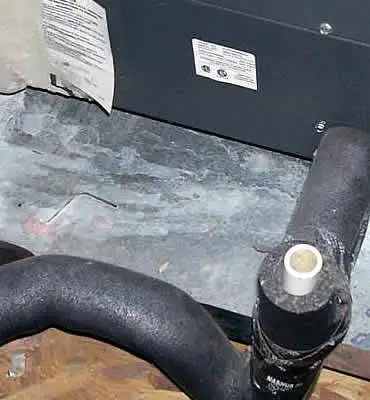
What’s a Condensate Drain Line?
What Should I Look For?
If you notice water marks on your ceiling, it could mean one of two things:
- You have horizontal pipes that are leaking or,
- Your condensate drain line is backed up or sweating.
We won’t know what’s causing the water to drip to your ceiling until we go to your home. If it’s a leaking pipe, then we would refer a plumber to do a horizontal or whole-home repipe. But if it’s a sweating or backed up condensate drain line, a John Moore AC technician can solve the problem with a condensate drain line repair.
As time passes, algae can start growing or rust from the evaporator coil can find its way inside of your condensate drain line. Rust, algae, or a combination of both get stuck at the connection point underneath your sink, and water begins to back up, causing your drain pan to overflow. Luckily, there’s a secondary, emergency condensate drain line that can prevent your drain pan from overflowing for some time. The draining point of your emergency condensate drain line can be found somewhere underneath your roof soffits, usually above a window. If you see this pipe leaking water, you should call an AC technician to unclog your condensate drain line and empty your drain pan.
What Causes Condensate Drain Line Leaks?
So what causes the water marks on your ceiling? It could be two things:
- Your drain pan could be overflowing with water or,
- The insulation around your condensate drain line has deteriorated or been chewed through by rodents in your attic, causing the drain line itself to sweat.
To identify the specific cause, a John Moore technician will inspect all the components of your AC system including the evaporator coil, drain pan, and drain lines.
How We Fix It
If your condensate drain line is backed up, we clear the line from the connection point under your sink and inspect the water to determine whether the culprit is algae, rust, or both. If it’s rust, we will recommend replacing the evaporator coil so the same blockage doesn’t happen again anytime soon. If we find algae, we will recommend using Plumbers’ Formula 6, a special plumbers formula you can put into the condensate drain line service port every month or so to prevent algae build-up. From there, we empty and clean the drain pan, run clean water through the condensate drain line to clean it out, and clear out the emergency condensate drain line with a wet vac.
If we inspect your condensate drain line and find that a lack of insulation is causing it to sweat water, we will look for signs of rodent bites and deterioration to determine the cause. More than likely, the insulation has deteriorated over time, but it’s also not uncommon for rodents to live in attics and chew on the insulation around the pipe. In either case, John Moore AC technicians can replace this insulation. But if we do determine that rodents chewed through the insulation, we will recommend and refer pest control to inspect your attic, rid it of all rodents, and take measures to prevent the problem from happening again.
If your ceiling or sheetrock incurred damage from a condensate drain line issue, our Renovation and Remodeling team can provide expert ceiling / drywall repair and painting services to make it look like the damage never happened.
Why Are Some Rooms Cooler than Others?
Air Duct Design and Air Balancing
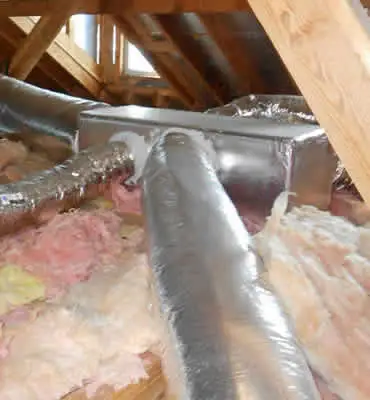
What is Air Duct Design and Air Balancing?
What Should I Look For?
What Causes Unbalanced Air Distribution?
Several things can cause inefficient ductwork or unbalanced air distribution:
- Your Air Duct has been pierced or crushed. It’s not uncommon for homeowners to accidently crush an air duct with a storage box or for another service person, like a cable guy, to accidentally lay on the duct work.
- Your air ducts were built too small to begin with.
- The tonnage of your HVAC system is too small or
- There is extra heat that was unaccounted for in the initial sizing of your equipment. Say, for instance, you add a flat screen TV, a computer, and game consoles into a room of your home. All of these devices will create extra heat in your room that wasn’t accounted for when the branch of ductwork leading to that room was sized.
How We Fix It
To fix uneven air distribution in your home, the first thing we do is conduct a heat load calculation. Based on factors like the size of your home, air leaks, heat producing electronics, and plants, we determine the ideal tonnage of your system. We then check the tonnage of your AC system, and if it’s too small, we will recommend a replacement of your entire AC system.
After we check the tonnage of your system, we will make sure your air ducts are intact. If we find any pierced, crushed, or undersized air ducts, we will determine what the cause was. If we determine rodents chewed through your duct work, we will patch up the holes and refer pest control to rid your home of rodents so it doesn’t happen again. If we determine your ductwork is undersized, we will recommend resizing them.
We will also go from air register to air register to measure the temperature of the air coming out versus the temperature your thermostat is set to. Generally, the air coming out of each register should be 20 degrees below the temperature your thermostat is set to. If the air coming out of a register is not 20 degrees below your thermostat’s setting, we will recommend an air balance. To balance the air in your home, we install various dampers to collars where your air ducts attach to the air plenum. We will then adjust each damper until the temperature of the room in question is what it should be.
If you live in a large, two-story home, we can also install a zone system with electronic dampers that can balance the air room by room or story by story.
As you can tell from the basic description of how an AC system works, there are a lot of components that affect one another.
If something happens to one part of your AC system, it might not shut down immediately, but it will begin to affect other areas.
For instance, if your refrigerant starts leaking, the indoor evaporator coil will get too cold and freeze up, which could permanently damage it. Just like with a car, as soon as you notice something isn’t right, you should call an AC technician before the problem gets worse.
It’s not uncommon for homeowners to wait until there are obvious signs before calling. The majority of AC related calls we get from homeowners are when their home can no longer reach a comfortable temperature or their system completely stops working. Unfortunately, waiting could mean more problems, more repairs, and more money spent down the road. In order to know what to look for before it’s too late, here are common repairs John Moore makes, what causes the issue for the repair, and what to look for.
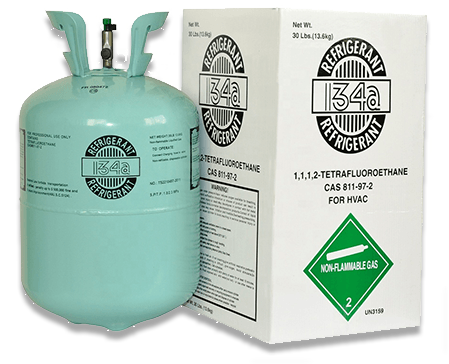
* Note on R-22 Refrigerant
If your system uses R-22 refrigerant, keep in mind that R-22 is being phased out by 2020. That means if your refrigerant leaks after the year 2020, you will have to replace your entire system. If we are inspecting a system that uses R-22 refrigerant, we will give you options to replace your AC system with a new one that uses R-410a. We strongly recommend upgrading your system before the 2020 phase out so you can budget, plan ahead, and not be surprised with a large expenditure in the near future.
After we determine whether or not a refrigerant leak is causing your condenser to malfunction, we will run some other diagnostics to test the capacitor, belts, relay switches, condenser coil, and fan motor. We will then provide options for any parts that need to be replaced in your condenser.
Lennox Premier Dealer
Attic Insulation Special
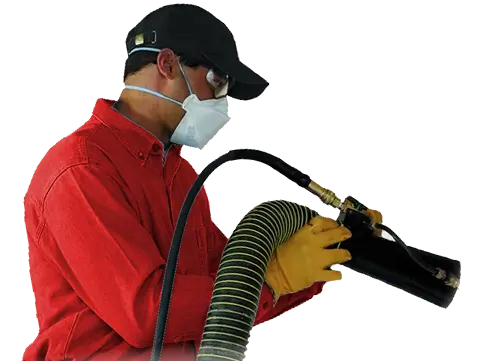
$100 OFF
For a Limited Time• Increase energy efficiency
• Improve your comfort
Indoor Air Quality & Duct Cleaning
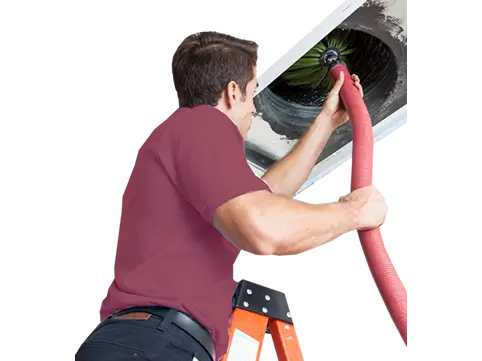
$100 OFF
For a Limited Time• Eliminate pet & household odors
• Breathe and sleep better
$50 OFF Nisus DSV Treatment
Specifically formulated to prevent contamination, and to eliminate existing viruses and bacteria, including the Coronavirus.
John Moore
(877) 730-2525
**This will not keep them out. Regular cleaning and disinfecting by home owner is required. Applies to initial treatment. Limit one per household. Some restrictions may apply. Cannot combine offers. Expires 12/31/2020.
Click here to see all coupons.
SEND TO PHONE$100 Off Platinum Carbon Air Purifier
Cleans the air by combining UVC light and activated carbon – two technologies proven to kill germs and clean the air.
John Moore
(877) 730-2525
*This purifier is installed directly into the central air system, so the air is purified and circulated throughout the whole home. Limit one per household. Some restrictions may apply. Cannot combine offers. Expires 12/31/2024.
Click here to see all coupons.
SEND TO PHONEAC Services
Save $20 on your next AC service or repair with any work over $100.
John Moore
(877) 730-2525
*Limit one per household. Some restrictions may apply. Cannot combine offers. Expires 12/31/2024.
Click here to see all coupons.
SEND TO PHONEAttic Insulation
Save $100 on attic insulation with minumum R-19 and 2,000 sq. ft.
John Moore
(877) 730-2525
*Limit one per household. Some restrictions may apply. Cannot combine offers. Expires 12/31/2024.
Click here to see all coupons.
SEND TO PHONEUV Light Disinfection
FREE UV light with purchase of complete new 16-SEER AC system.
$549.99 Value
John Moore
(877) 730-2525
*Limit one per household. Some restrictions may apply. Cannot combine offers. Must be presented at time of purchase. Expires 12/31/2024.
Click here to see all coupons.
SEND TO PHONEShare this Page
